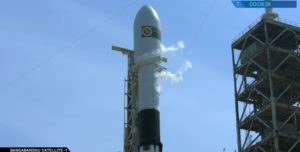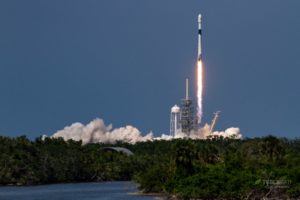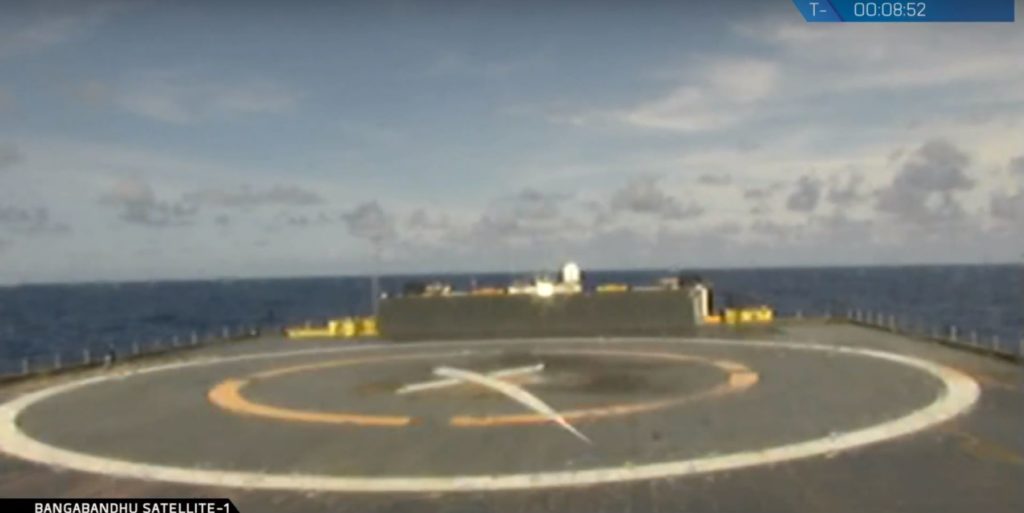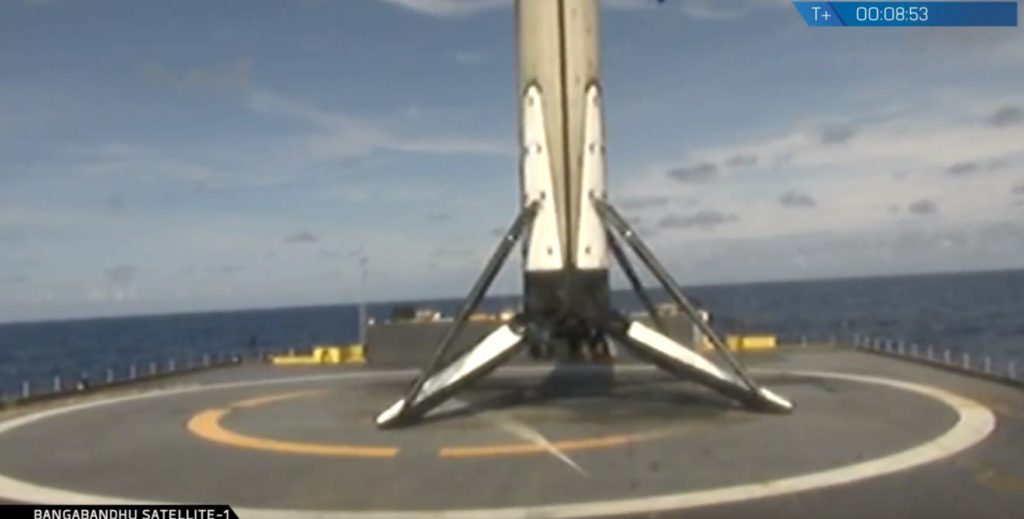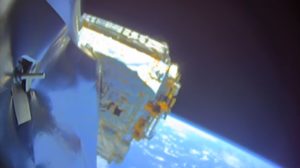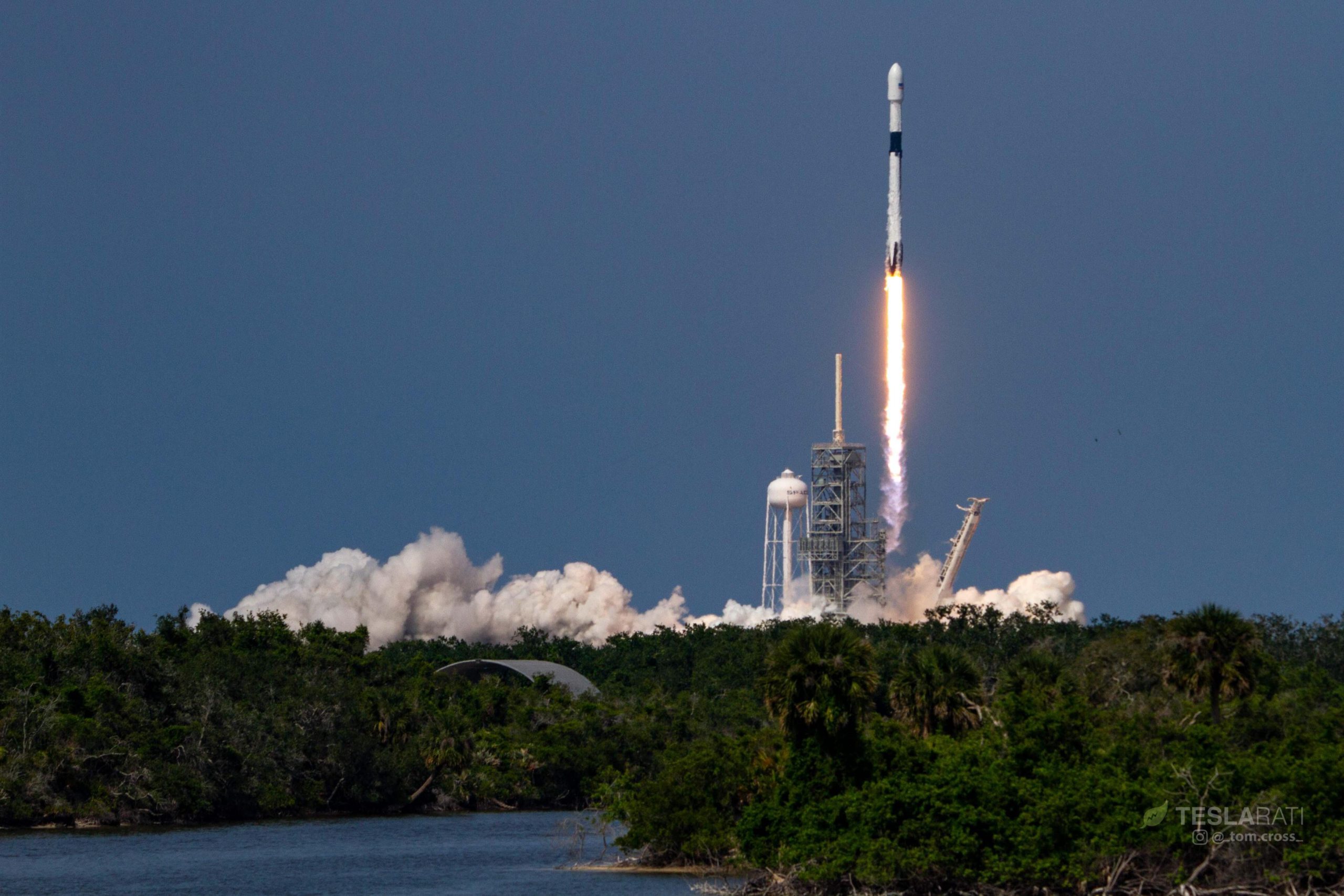
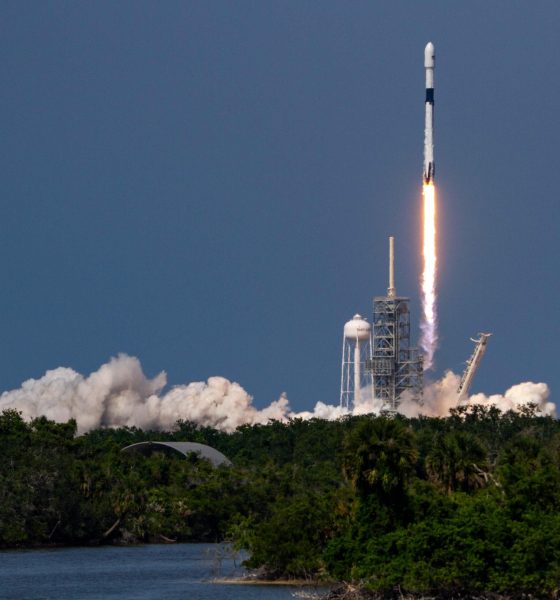
News
SpaceX’s successful debut of Falcon 9 Block 5 heralds the future of reusable rocketry
Following a brief software bug-triggered abort during the first attempt, SpaceX has successfully debuted its first Falcon 9 Block 5 rocket from Florida’s Kennedy Space Center, marking the true beginning of a new era of highly reusable commercial rocketry, as well as Bangladesh’s official entry into satellite communications with the Bangabandhu-1 satellite.
Followed minutes later by the first landing of its next-generation booster aboard the ocean-going drone ship Of Course I Still Love You (OCISLY), many more Falcon 9 Block 5 launches can now be expected to follow later this year as SpaceX ramps up the manufacture and shipment of new boosters, upper stages, and payload fairings to its test and launch facilities.
Fundamentally, this launch is a historic achievement for SpaceX. According to CEO Elon Musk, barring unforeseen discoveries during the pathfinder booster’s post-recovery teardown, Falcon 9 Block 5 as it stands today is nearly capable of ushering in a new era of truly reusable rockets, and is designed to (nominally) fly as many as ten times in a row with the barest minimum of refurbishment. While it is all but guaranteed that small optimizations and upgrades will continue to be made throughout the launch vehicle, today’s mission – the 25th successful booster landing and 55th launch of Falcon 9 – by all appearances successfully flight-tested almost every single one of the rocket’s dramatically upgraded systems, ranging from entirely new avionics to uprated and upgraded Merlin engines and landing legs.
- F9 B1046 venting ahead of its inaugural launch. (SpaceX)
- Falcon 9 Block 5 successfully debuted earlier today, completing a nearly-flawless launch and landing. (Tom Cross)
Somewhat fittingly, the only problem visible on the company’s webcast of the rocket’s critical debut was with the webcast itself, in the form of some odd shaking and connectivity issues on the first stage (and the second stage to a lesser degree). Thankfully, this “bug” is skin-deep – its only negative impact was mild annoyance among the many thousands watching live, a small price to pay to such an extraordinary show. Falcon 9 B1046 and its upper stage performed nominally, landing aboard the drone ship Of Course I Still Love You and flawlessly placing Bangladesh’s first geostationary communications satellite into a transfer orbit.
- OCISLY patiently awaits its rocket friend. (SpaceX)
- B1046 completes successfully landed aboard OCISLY; hopefully the first of many more to come. (SpaceX)
With its debut complete, SpaceX’s first Block 5 booster will now head back to Port Canaveral after being safely secured by everyone’s favorite rocket-grabbing robot. After its return to land, it’s extremely likely that SpaceX will choose to transport the rocket back to either Hawthorne or McGregor to conduct an extremely thorough teardown analysis of the booster, checking to ensure that each component and system made it through a high-energy reentry with minimal impact. While small changes are all but guaranteed, this teardown will hopefully confirm SpaceX’s extensive modeling and ground-testing – in other words, Block 5’s design will hopefully be shown to be ready for rapid reusability and extreme reliability. More likely than not, B1046 will then be reassembled, perhaps followed by extensive static-fire testing in Texas, after which it will likely return to SpaceX’s operational rocket fleet, potentially conducting dozens of launches over the next several years. Perhaps SpaceX will choose to turn it into a new historic monument after several reflights.
Finally, congratulations to Bangladesh on the successful launch of their first geostationary communications satellite.
- Inside Falcon 9’s interstage before stage separation. Note MVac and its massive nozzle. (SpaceX)
- Bangabandhu-1 was successfully deployed just over half an hour after lifting off from the coast of Florida. (SpaceX)
Launch photographer Tom Cross is planning to be there in person for OCISLY and B1046’s arrival in Port, and will hopefully be able to document the historic recovery and the booster’s (fingers crossed) resilience, as well as the first use of Octagrabber with a Block 5 Falcon 9. Remote camera pickup is currently scheduled for tomorrow morning.
Follow us for live updates, behind-the-scenes sneak peeks, and a sea of beautiful photos from our East and West coast photographers.
Teslarati – Instagram – Twitter
Tom Cross – Twitter
Pauline Acalin – Twitter
Eric Ralph – Twitter

News
SpaceX shades airline for seeking contract with Amazon’s Starlink rival

SpaceX employees, including its CEO Elon Musk, shaded American Airlines on social media this past weekend due to the company’s reported talks with Amazon’s Starlink rival, Leo.
Starlink has been adopted by several airlines, including United Airlines, Qatar Airways, Hawaiian Airlines, WestJet, Air France, airBaltic, and others. It has gained notoriety as an extremely solid, dependable, and reliable option for airline travel, as traditional options frequently cause users to lose connection to the internet.
Many airlines have made the switch, while others continue to mull the options available to them. American Airlines is one of them.
A report from Bloomberg indicates the airline is thinking of going with a Starlink rival owned by Amazon, called Leo. It was previously referred to as Project Kuiper.
American CEO Robert Isom said (via Bloomberg):
“While there’s Starlink, there are other low-Earth-orbit satellite opportunities that we can look at. We’re making sure that American is going to have what our customers need.”
Isom also said American has been in touch with Amazon about installing Leo on its aircraft, but he would not reveal the status of any discussions with the company.
The report caught the attention of Michael Nicolls, the Vice President of Starlink Engineering at SpaceX, who said:
“Only fly on airlines with good connectivity… and only one source of good connectivity at the moment…”
CEO Elon Musk replied to Nicolls by stating that American Airlines risks losing “a lot of customers if their connectivity solution fails.”
American Airlines will lose a lot of customers if their connectivity solution fails
— Elon Musk (@elonmusk) December 14, 2025
There are over 8,000 Starlink satellites in orbit currently, offering internet coverage in over 150 countries and territories globally. SpaceX expands its array of satellites nearly every week with launches from California and Florida, aiming to offer internet access to everyone across the globe.
Currently, the company is focusing on expanding into new markets, such as Africa and Asia.
News
Tesla Model Y Standard stuns in new range test, besting its Premium siblings
Tesla’s newer vehicles have continued to meet or exceed their EPA estimates. This is a drastic change, as every 2018-2023 model year Tesla that Edmunds assessed did not meet its range estimates.
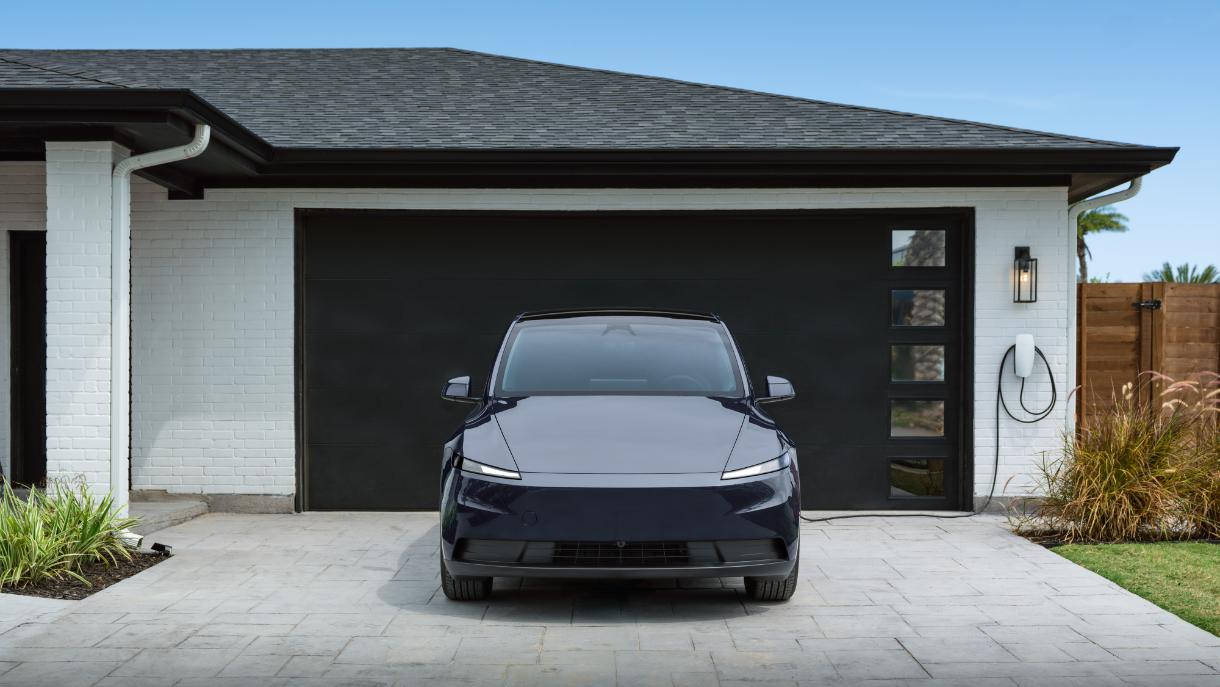
The Tesla Model Y Standard stunned in a new range test performed by automotive media outlet Edmunds, besting all of its Premium siblings that are more expensive and more luxurious in terms of features.
Testing showed the Model Y Standard exceeded its EPA-estimated range rating of 321 miles, as Edmunds said it is the “longest-range Model Y that we’ve ever put on our loop.” In the past, some vehicles have come up short in comparison with EPA ranges; for example, the Model Y’s previous generation vehicle had an EPA-estimated range of 330 miles, but only drove 310.
Additionally, the Launch Series Model Y, the first configuration to be built in the “Juniper” program, landed perfectly on the EPA’s range estimates at 327 miles.
It was also more efficient than Premium offerings, as it utilized just 22.8 kWh to go 100 miles. The Launch Series used 26.8 kWh to travel the same distance.
It is tested using Edmunds’ traditional EV range testing procedure, which follows a strict route of 60 percent city and 40 percent highway driving. The average speed throughout the trip is 40 MPH, and the car is required to stay within 5 MPH of all posted speed limits.
Each car is also put in its most efficient drive setting, and the climate is kept on auto at 72 degrees.
“All of this most accurately represents the real-world driving that owners do day to day,” the publication says.
With this procedure, testing is as consistent as it can get. Of course, there are other factors, like temperature and traffic density. However, one thing is important to note: Tesla’s newer vehicles have continued to meet or exceed their EPA estimates. This is a drastic change, as every 2018-2023 model year Tesla that Edmunds assessed did not meet its range estimates.
Tesla Model Y Standard vs. Tesla Model Y Premium
Tesla’s two Model Y levels both offer a great option for whichever fits your budget. However, when you sit in both cars, you will notice distinct differences between them.
The Premium definitely has a more luxurious feel, while the Standard is stripped of many of the more premium features, like Vegan Leather Interior, acoustic-lined glass, and a better sound system.
You can read our full review of the Model Y Standard below:
Tesla Model Y Standard Full Review: Is it worth the lower price?
News
Xpeng CEO: Tesla FSD 14.2 has developed “near-Level 4” performance
While acknowledging that imperfections remain, the Xpeng CEO said FSD’s current iteration significantly surpasses last year’s capabilities.

Xpeng CEO He Xiaopeng has offered fresh praise for Tesla’s Full Self-Driving (FSD) system after revisiting Silicon Valley more than a year after his first hands-on experience.
Following extended test drives of Tesla vehicles running the latest FSD software, He stated that the system has made major strides, reinforcing his view that Tesla’s approach to autonomy is indeed the proper path towards autonomy.
Tesla FSD closing in on Level 4 driving
During his visit, He test-drove a Tesla equipped with FSD V14.2. He also rode in a Tesla Robotaxi. Over roughly five hours of driving across Silicon Valley and San Francisco, He said both vehicles delivered consistent and reassuring performance, a notable improvement from his experience a year earlier.
According to He, Tesla’s FSD has evolved from a smooth Level 2 advanced driver assistance system into what he described as a “near-Level 4” experience in terms of capabilities. While acknowledging that imperfections remain, the Xpeng CEO said FSD’s current iteration significantly surpasses last year’s capabilities. He also reiterated his belief that Tesla’s strategy of using the same autonomous software and hardware architecture across private vehicles and robotaxis is the right long-term approach, allowing users to bypass intermediate autonomy stages and move closer to Level 4 functionality.
He previously tested Tesla’s FSD V12.3.6 and Waymo vehicles in California in mid-2024, noting at the time that Waymo performed better in dense urban environments like San Francisco, while Tesla excelled in Silicon Valley and on highways.
Xpeng’s ambitious autonomy roadmap and internal challenge
The Silicon Valley visit also served as a benchmark for Xpeng’s own autonomy ambitions. He stated that Xpeng is looking to improve its VLA autonomous driving system to match the performance of Tesla’s FSD V14.2 within China by August 30, 2026. Xpeng is poised to release its VLA 2.0 smart driving software next quarter, though He cautioned that the initial version will not be able to match FSD V14.2’s capabilities, as noted in a CNEV Post report.
He also added a personal twist to the goal, publicly challenging Xpeng’s autonomous driving team. If the performance target is met by the 2026 deadline, the CEO stated that he will approve the creation of a Chinese-style cafeteria for Xpeng’s Silicon Valley team. If not, Liu Xianming, head of Xpeng’s autonomous driving unit, has pledged to run naked across the Golden Gate Bridge, He noted.
